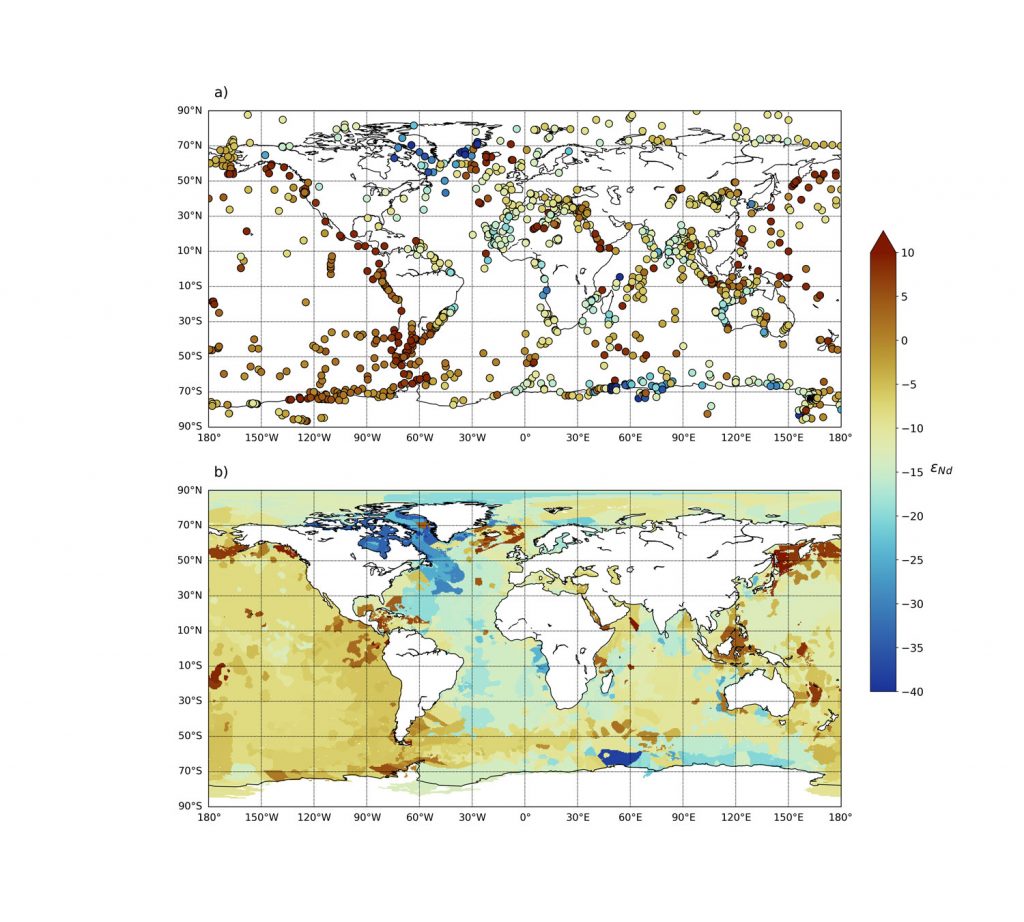Updated compilation of the global continental and marine lithogenic neodymium isotopic measurements
The work proposed by Robinson and co-workers (2021, see reference below) was more than expected! Using an up- to-date compilation of published terrestrial and marine sedimentary Nd isotopic measurements, they constructed a high resolution, gridded, global maps that characterise the Nd-isotopic signature (εNd) of the continental margins and seafloor sediment. This a considerable improvement of Nd-source identification compared to the seminal work of Jeandel et al. (2007, see reference below). Among others, Robinson’s study provides a refined map of the seafloor sediment εNd, based on measurements from pore waters and deep seafloor detrital samples. Such better characterisation of global εNd distributions at the entire sediment-ocean interface, together with a refined description of the εNd signature of the fields surrounding the northern North Atlantic Ocean, is a rich resource for further modelling.

References:
Robinson, S., Ivanovic, R., van de Flierdt, T., Blanchet, C. L., Tachikawa, K., Martin, E. E., Cook, C. P., Williams, T., Gregoire, L., Plancherel, Y., Jeandel, C., Arsouze, T. (2021). Global continental and marine detrital εNd: An updated compilation for use in understanding marine Nd cycling. Chemical Geology, 567, 120119. Access the paper: https://doi.org/10.1016/J.CHEMGEO.2021.120119
Jeandel C., Arsouze T., Lacan F., Téchiné P. and Dutay J.-C. (2007). Isotopic Nd compositions and concentrations of the lithogenic inputs into the ocean: a compilation, with an emphasis on the margins. Chemical Geology, 239, 156-164. Access the paper: https://doi.org/10.1016/j.chemgeo.2006.11.013
